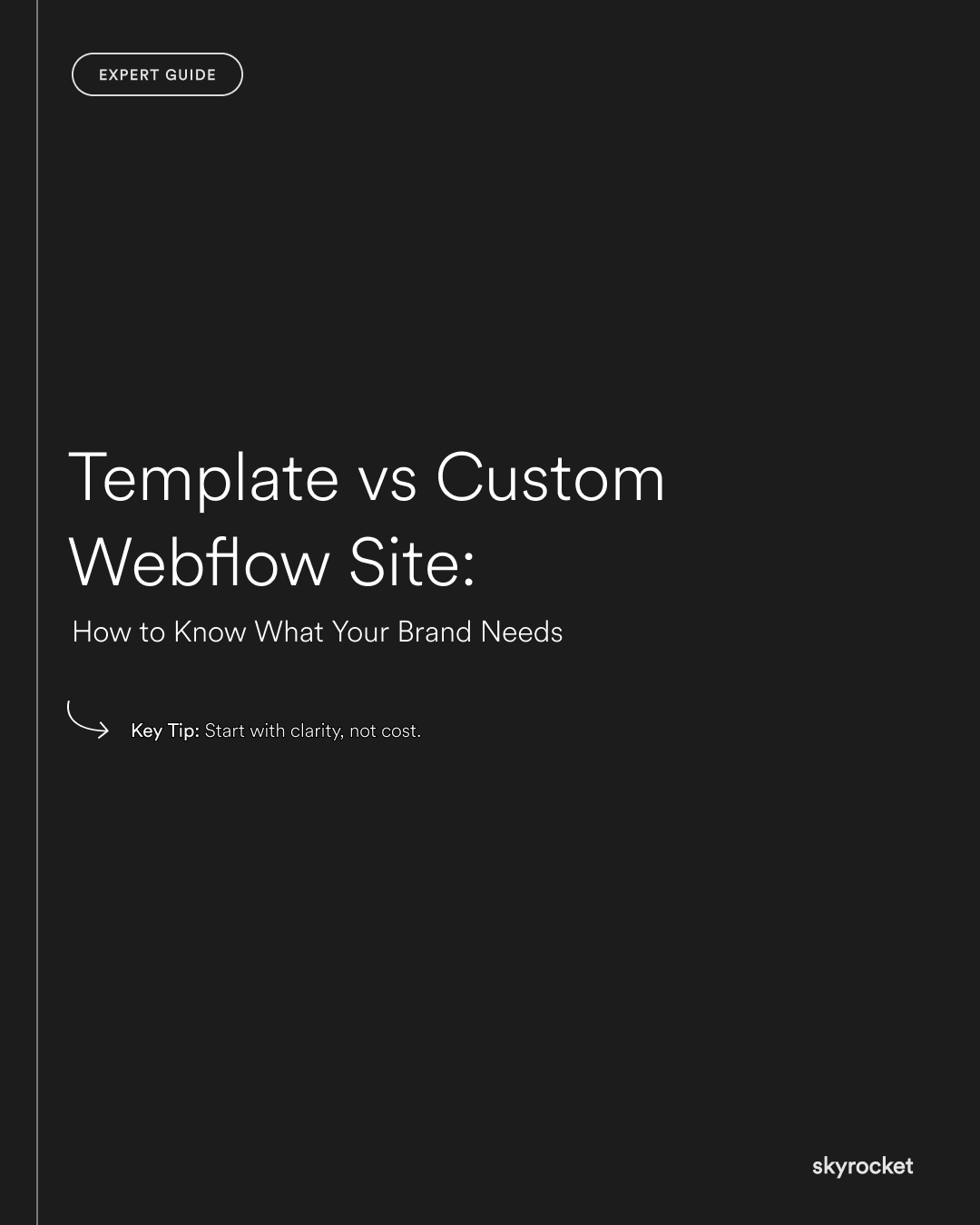You know your business needs a website that works. But when it comes time to build or refresh, one question comes up fast: should we use a pre-built template or invest in a custom Webflow site?
On the surface, templates look faster and cheaper. Custom builds look more expensive and complex. The truth is more nuanced, and the wrong choice can cost you more than money. It can cost you growth, brand credibility, and efficiency.
Why this choice matters in business terms
Your website is more than a digital brochure. It is a sales tool, a trust builder, and often the first interaction a potential customer has with your brand.
The wrong choice can lead to:
- A generic site that fails to stand out or convert.
- A bloated, overbuilt site that is hard to update and maintain.
- Missed opportunities because your site does not reflect your unique business needs.
The right choice, on the other hand, helps you:
- Launch quickly without wasting budget.
- Build trust and credibility from the first click.
- Support your sales and marketing goals efficiently.
Key Tip: Start with clarity, not cost. It is tempting to compare template vs custom purely on price. But the smarter move is to start with clarity on what your website needs to achieve. A clear understanding of your goals almost always reveals which path is right.
When a template makes sense
1. You need to launch fast
If your priority is speed, templates can get you online quickly with minimal build time.
2. Your budget is tight
Templates are cost-effective for early-stage businesses or those testing a new idea.
3. You only need the basics
If your site is mainly informational, with simple content and few custom needs, a template can work well.
4. You are willing to compromise on uniqueness
Templates are shared. Your site may look similar to others. If that is acceptable in your industry, the trade-off may be worth it.
When a custom Webflow build is the smarter move
1. Brand credibility matters
If standing out is key, a custom design signals professionalism and sets you apart.
2. Your sales process is more complex
Custom builds let you tailor pages and flows around how you actually sell.
3. You want long-term scalability
Custom setups are easier to expand without bolting on awkward fixes later.
4. You care about performance
Custom sites are leaner and faster because they avoid the clutter of pre-baked template features.
5. You want a site your team can easily manage
Custom CMS structures can be designed specifically for your content team, making updates painless.
Real-world example
A NZ service business initially launched with a Webflow template to get online fast. It worked fine for a year, but as they grew, the limitations became obvious. The template could not handle their expanding service offerings or the custom integrations they needed. They later invested in a custom site that supported their growth goals. In hindsight, the extra upfront investment would have saved them months of frustration and duplicated costs.
Common misconceptions
“Can’t we just tweak the template?”
Small tweaks are fine. But heavy customisation often costs more than starting from scratch, because developers have to work around limitations.
“Templates look just as professional as custom builds.”
Some do, but the difference shows in the details — flexibility, performance, and how well the site aligns with your unique brand.
“We will upgrade later.”
Possible, but migrating from a template to a custom build often means rebuilding much of the site anyway. It is better to weigh the long-term needs upfront.
What to do now
- List your website’s top three business goals (sales, trust, efficiency, etc.).
- Decide if speed-to-launch or long-term scalability matters more right now.
- Be honest about budget — but factor in long-term costs, not just the upfront spend.
- Check how unique your brand needs to look in your industry.
- Choose the path that best supports your goals, not just your wallet.
Your website decision should not be about chasing the cheapest or flashiest option. It should be about choosing the setup that supports your brand, your sales, and your growth. If you would like a second opinion on which path is best for your business, we are always happy to chat.



